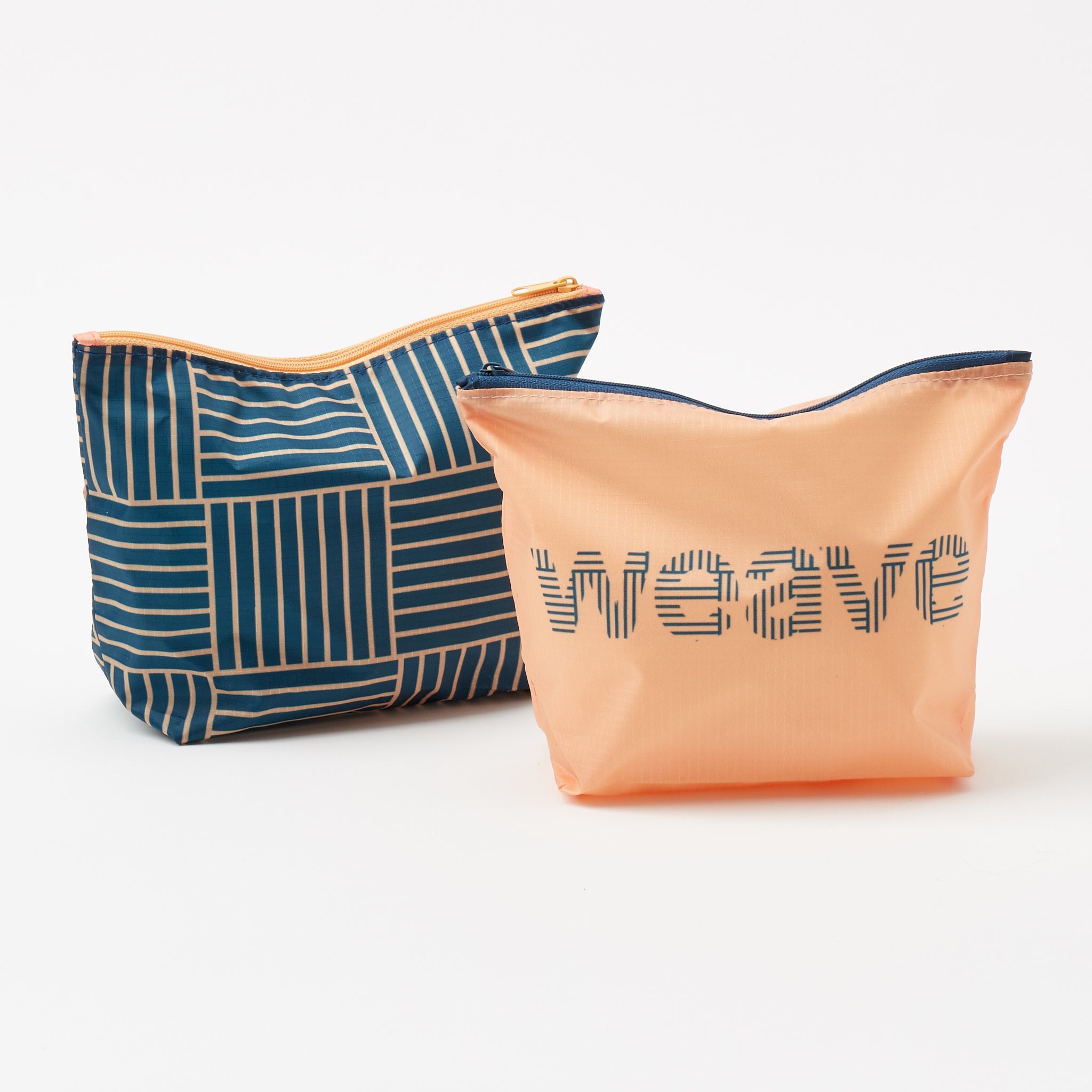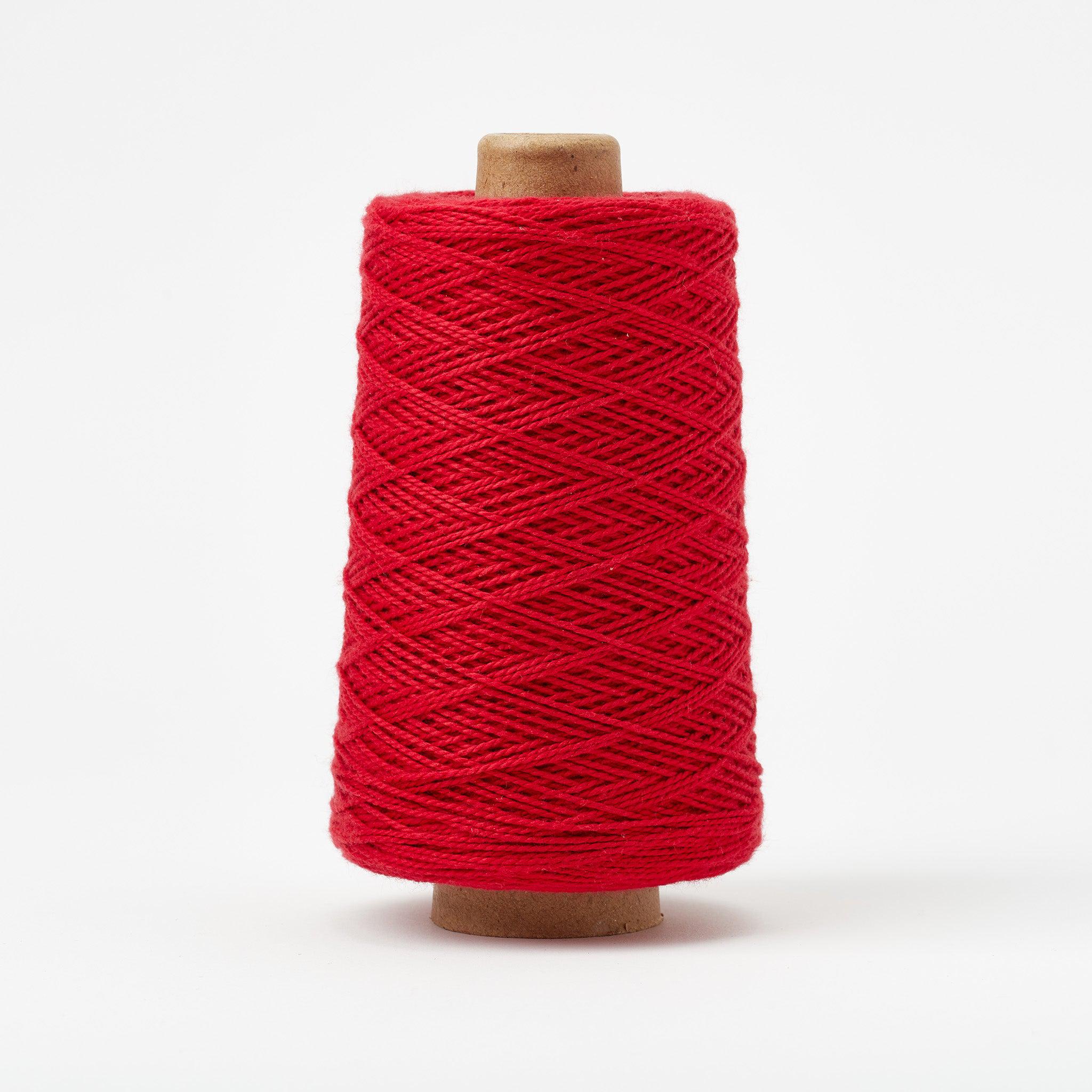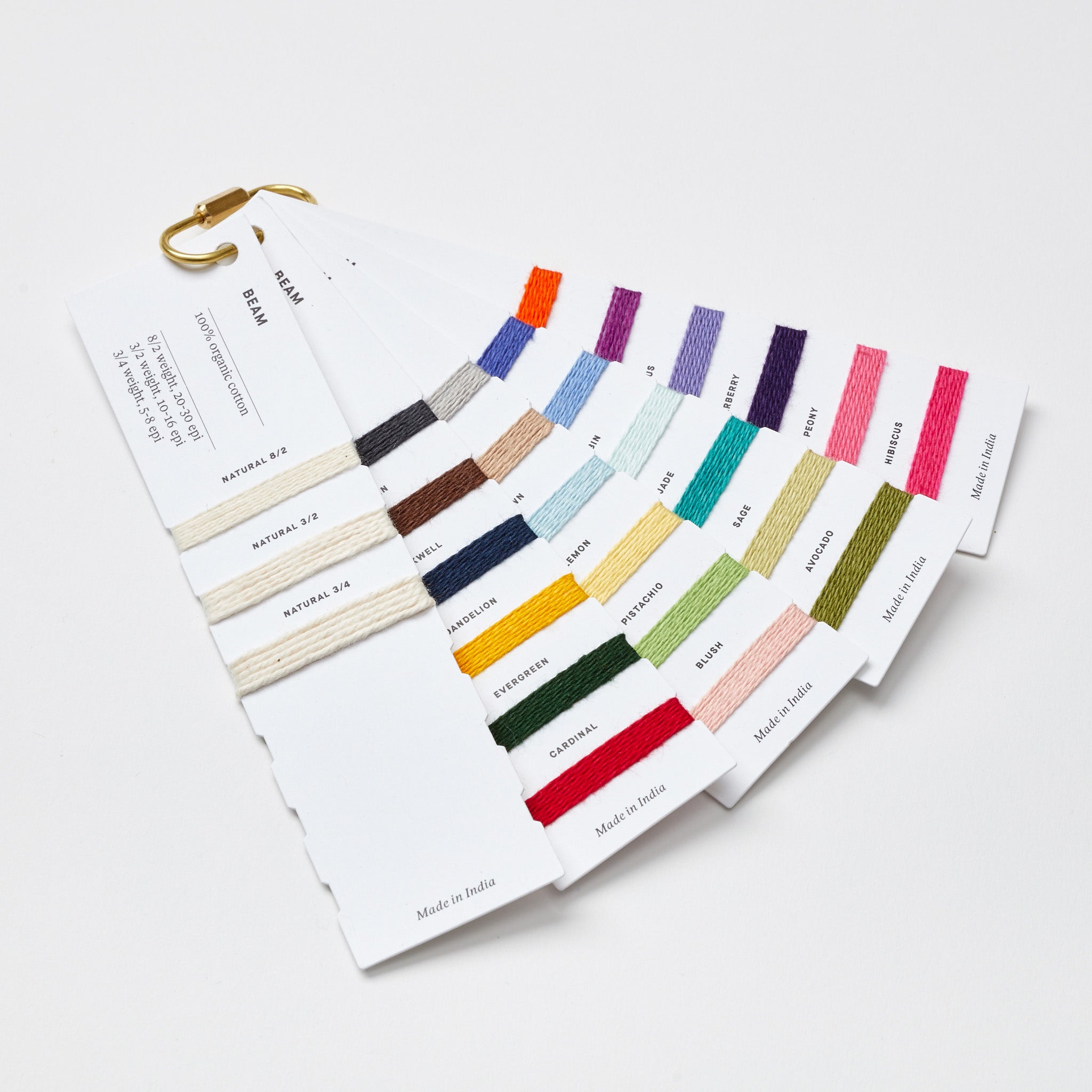Shopping Cart
*continental US addresses only

*continental US addresses only
Your Cart is Empty





It can feel like more choice = better choices, but when it comes to purchasing a new loom, the types of looms, names, and sizes available can make the decision challenging.
When people ask what type of weaving loom to buy, I generally start with one all-important question: what do you want to make? And then we go from there! Today on the blog I’m going to walk you through the four basic types of looms that we sell at Gist and tell you what they’re good (or not good) for, as well as some of the other considerations you may have when buying a loom.

Before you wade into loom types or size, it’s best to think about what you want to make. For example: if you’re keen on trying Array and weaving wall hangings, one of the tapestry looms we carry is probably your best bet. But if you’re pining after scarves or kitchen towels and have limited space, a rigid heddle may be more appropriate than a floor loom.
There is one basic limitation to keep in mind when choosing a weaving loom: width.
While most looms can accommodate a few yards of warp, they have a fixed width. If your loom is 16” wide, for example, you won’t be able to weave a project that’s 20” wide. This doesn’t mean wider is better—instead, I recommend that you think about what you want to make and then measure a few similar items you have at home. If towels and small household items are what you primarily want to make, a 24” or 32” wide loom is all most people need. But if you know scarves are going to be your thing, an 18” Wolf Pup or 12-20” Ashford Knitters Loom may be all you need.
Wider weaving widths are physically more demanding, and a larger loom takes up that much more space. If, like me, you worry about “what ifs,” know that your local weaving guild likely has wider looms available to rent or borrow—and that you can always stitch together two pieces of cloth.
As the name suggests, a tapestry loom is suited to weaving weft-faced textiles like tapestries and wall-hangings. Gist carries three exceptional options when it comes to tapestry looms. Something like the Saffron Pocket Tapestry Loom is the most basic option. Its small size (the word pocket gives you a clue!) is great for travel, making small sketches, or practice. The Mirrix and Schacht tapestry looms come in various sizes, heights, and have various adjustments to suit your projects and needs.
What to look for in a tapestry loom: Size, weight, and add-ons! Depending on the loom you choose, our selection of tapestry looms comes with a variety of options. If you’re looking for a workshop loom, for example, a smaller, lightweight option like the 16” Big Sister Tapestry Loom might be just what you need. Some looms come with features like heddle bars and Texsolv cords to help make a shed.
What a tapestry loom can’t do: Tapestry looms are uniquely suited to weft faced weaves where the warp is partially or totally covered. This loom doesn’t suit balanced weaves or projects with more complex weaving structures, where rigid heddles, shafts or other devices help make the weaving more efficient.
What yarn to use with a tapestry loom: Our Array yarn was developed to create the perfect palette for tapestries—pair it with one of our tapestry warp yarns.
The rigid heddle loom is a fantastic way to learn about weaving in an easy-to-use and simple package. At Gist we have two different brands of rigid heddle loom: Ashford and Schacht. The rigid heddle loom is ideally used for plain weave projects—a simple over-one-under-one weave that is a foundational weaving structure the world over. Rigid heddle looms come in a variety of widths from 10”-48” and have different sized heddles to suit a range of yarns. A rigid heddle loom also makes a great tapestry loom!
What to look for in a rigid heddle loom: Size, folding, and add ons! If you’re tight on space, a rigid heddle loom may be just what you need. They tend to have a low profile, and some, like the Ashford Knitter’s Loom, fold in half for storage. Add ons like the Schacht Flip Trap can help store tools and yarns.
What a rigid heddle loom can’t do: The rigid heddle itself combines two mechanisms found on table and floor looms: the heddles and reed. This means that the dents on a rigid heddle are fixed, so projects requiring 20 epi may be more challenging unless you’re interested in buying a second heddle. A second heddle also enables you to weave twill and more complex structures, but it may be more efficient to upgrade to a table or floor loom if you know you want to weave very fine or complex textiles. Rigid heddle looms also have basic tensioning so some projects (like densely beaten rugs) may be more efficient to make on another type of loom.
Recommended yarn to use with a rigid heddle loom: Beam, Duet, Mallo, Ode
A table loom is a great piece of equipment for weavers who need something portable or lighter weight than a floor loom. As the name suggests, they sit on a table or on a stand, and generally come with 2-8 shafts. Table looms generally use hand-manipulated levers to raise shafts, which can make them more accessible for people with foot, knee, or leg limitations. Some table looms, like the Ashford Katie, even fold!
What to look for in a table loom: Size, folding, and mechanisms. Gist carries three different table loom brands: Ashford, Leclerc and Schacht. They come in a variety of widths from 12”-32” and may have add ons like stands or foot treadles. Each brand has differences that may make it more or less attractive for your needs: for example, if you’re looking for a workshop or traveling loom, the handle on the side of the Louet Jane makes it very easy to carry from car to class.
What a table loom can’t do: I have a table loom that I use primarily for sampling and the main drawback I see is that I can’t always beat as firmly as I may like. Unlike a floor loom, a table loom can slide about on a table, so I leave big, dense projects for my floor loom.
Recommended yarn to use with a table loom: Array, Beam, Duet, Mallo, Ode, Sero
Ahh, the floor loom! It’s the biggest and often most sturdy type of weaving loom. The floor looms we carry at Gist come in 4-8 shafts and a variety of widths. Floor looms have some variation in their mechanisms, and are usually divided into jack, counterbalance, and countermarch—you can read more about that in part one of How to Buy a Used Loom.
What to look for in a floor loom: Next to width, how many shafts a loom has is generally the deciding factor when it comes to buying a floor loom. Some floor looms, like the Schacht Wolf Pup and Baby Wolf, are built to be taken to workshops or classes: both the front and back fold, and the Baby Wolf even has wheels! Other looms, like the Fanny II from Leclerc, only fold from the back and are meant to be stationary.
What a floor loom can’t do: Good question! You can weave everything from a tapestry to plain weave, to complex 4 and 8 (or more) shaft projects on a floor loom. As with table looms, some looms or shaft mechanisms may be better suited to certain projects than others. If you can, test-driving a friend’s loom or trying one out at a guild or show may help you narrow down your decision. A floor loom is a big investment—I usually recommend starting with a rigid heddle if you’re new to weaving, so that you can try it out without committing too much time, money, and space. Looms also have great resale value.
Recommended yarn to use with a floor loom: Array, Beam, Duet, Mallo, Ode, Sero

Still don’t know what type of loom is best for your needs? We recommend browsing our archive of weaving patterns to see what catches your eye or reading our two-part series on buying a used weaving loom. It contains great information that’s just as applicable to buying a new loom as it is a used one. You can read part one here and part two here.
Amanda Rataj is an artist and weaver living and working in Hamilton, Ontario. She studied at the Ontario College of Art and Design University and has developed her contemporary craft practice through research-based projects, artist residencies, professional exhibitions, and lectures. Subscribe to her studio newsletter or follow her on Instagram to learn about new weaving patterns, exhibitions, projects, and more.